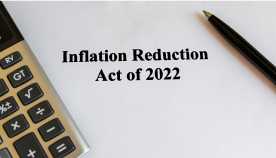New AARP Poll of 44 Most Competitive Congressional Districts Shows Voters Ages 50-64 Lean Republican, While Voters Ages 65+ Lean Democrat
Data Reveal Where Candidates Stand to Woo More Voters by Gender, Ethnicity, and on Issues Ranging from the Economy to Family Caregiving
WASHINGTON—Today, AARP released a poll of likely voters from the 44 most competitive congressional districts this election season. The survey found a generic Republican candidate and generic Democratic candidate tied at 45%, with voters ages 50 and older favoring Republicans, 48% - 44%. By age group, voters 50-64 favor Republicans by a 13-point margin, while voters 65 and older vote for the Democrat by 5-points. Among women, Hispanic, and Black voters ages 50 and older, Democrats lead by 2-points, 15-points, and 65-points, respectively.
Voters ages 50 and older will be key to determining who wins in November. This voting bloc makes up an outsized portion of the electorate: in the 2020 elections, older voters accounted for 55% of all voters and in the 2022 mid-terms, they made up 64% of the country’s voters. Eighty-four percent of voters ages 50 and older say they are “extremely motivated” to vote in this election, compared to 63% of voters under 50.
Former President Donald Trump (R) leads President Joe Biden (D), 42% to 37%, among voters ages 18 and older in these districts, with Robert Kennedy Jr. at polling at 11%. The race is closer in the head-to-head race between Trump and Biden, with Trump leading at 47%-45% among voters overall. Trump also leads among voters ages 50 and older, 45% - 41%, with President Biden leading by 5-points among voters ages 65 and older, while Trump is ahead by 13-points among voters ages 50-64.
“Americans ages 50 and older are our nation’s most powerful voters and they will be the deciders in November,” said Nancy LeaMond, AARP Executive Vice President and Chief Advocacy and Engagement Officer. “If candidates want to win, they should pay attention to the issues that matter to voters over age 50, from protecting Social Security to supporting family caregivers.”
Other key takeaways from the poll among voters ages 50 and older include:
- A majority (55%) say Social Security is or will be a major source of their income, and 80% say it will be an extremely or very important issue in determining their vote.
- The group that says Social Security will be important to their vote trusts Democrats in Congress over the GOP to address Social Security by an 8-point margin and plans to vote for the Democratic candidate by a 2-point margin.
- Economic concerns are highest among Republican voters ages 50 and older but are also high among Independents and Democrats (especially Social Security).
- Sixty-two percent of voters ages 50 and older say they are worried about their personal financial situation. Among them, the generic Republican candidate leads by 25-points and Trump leads by 27-points.
- Black voters ages 50 and older cite personal economic issues as most pressing, ranking Social Security as among their top two issues heading into the election.
- Twenty-four percent of voters overall and 30% of voters ages 50 and older consider themselves family caregivers, while 40% of older Hispanic voters and 37% of older Black voters say the same.
- Voters ages 50 and older, regardless of party affiliation, say they would be more likely to vote for a candidate who provides support to family caregivers to allow seniors to live independently at home as they age (80%) or provide a tax credit to family caregivers to help cover caregiving costs (74%).
View the complete survey results.
AARP commissioned the bipartisan polling team of Fabrizio Ward (R) & Impact Research (D) to conduct a survey of voters in Targeted Congressional Districts across the country as defined by the Cook Political Report. The firms interviewed 2,324 likely voters, which included a core representative sample of 1200 likely voters and an oversample of 540 likely voters age 50+ up to 1200 total likely voters 50+ older, both of which had a roughly equal number of interviews (27-28) conducted in each district. There was also an additional oversample of 256 Hispanic likely voters age 50+, and an additional oversample of 328 Black likely voters age 50+. The survey was done between June 3-June 9, 2024. The interviews were conducted via live interviewer on landline (19%) and cellphone (39%), as well as SMS-to-web (42%). The sample was randomly drawn from the voter list. Interviews were offered in English and Spanish. The margin of sampling error at the 95% confidence level for the 1200 sample is ±2.9%; for the 1200 total sample of voters 50+ is ±2.9%; for the 400 total sample of Hispanic voters 50+ and Black voters 50+ is ±4.9%.
###
About AARP
AARP is the nation's largest nonprofit, nonpartisan organization dedicated to empowering people 50 and older to choose how they live as they age. With a nationwide presence, AARP strengthens communities and advocates for what matters most to the more than 100 million Americans 50-plus and their families: health security, financial stability and personal fulfillment. AARP also produces the nation's largest circulation publications: AARP The Magazine and AARP Bulletin. To learn more, visit www.aarp.org/about-aarp/, www.aarp.org/español or follow @AARP, @AARPenEspañol and @AARPadvocates on social media.























































